Save Your Home from Foreclosure
Save Your Home from Foreclosure
 Saving Homes from Foreclosure
Saving Homes from Foreclosure
Rebuilding American Home Ownership Plan
Link: Senator Jeff Merkley’s Rebuilding American Homeownership in pdf format
 Saving Homes from Foreclosure
Saving Homes from ForeclosureLink: Senator Jeff Merkley’s Rebuilding American Homeownership in pdf format
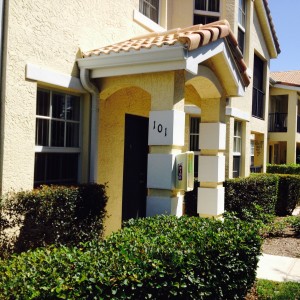 How to Prevent Mold in Vacation Home or Condo in Florida
How to Prevent Mold in Vacation Home or Condo in FloridaFor people who own a piece of paradise in the City of Port St Lucie, it is important to know how to prevent mold in your home or condo in Florida. The following information is compiled to demonstrate how with a few simple steps you could avoid the costly and sometimes devastating effect of mold and mildew in your vacation home in Florida.
Mold can start to take roots inside your home when the Relative Humidity (RH) exceeds about 68 percent. A Humidistat, which directly controls indoor Relative Humidity, is one way to prevent mold. It is also important to know that the dehumidifiers and some central air conditioners have a built-in humidistat that tells the system to dehumidify the air to the desired point.
Since some humidistat sensors are inaccurate by as many as 10 percentage points, set the controls of your humidistats and dehumidifiers to 58 percent RH to maintain acceptable humidity,
For homes or condos without humidistat, another way to control mold when you’re away is by programming the A/C to run at 72 degrees for just two hours before sunrise and at 88 degrees the rest of the day.
But what if you don’t have a programmable thermostat? In that case, set the A/C at 77 degrees for condos or apartments and 80 degrees for single family homes and townhouses. (Remember to have the fan switch set to auto.)
If you live seasonally in the city of Port St Lucie, Florida or leave for extended periods of time, the most economical way to prevent mold in a vacant home is by using stand-alone dehumidifiers instead of A/C. Use one for every 1,000 square feet. Visit FPL.com to learn what settings are best when you’re away. Be sure to have your home checked regularly.
We also recommend repairing any leaks around doors, windows and in your A/C ductwork, which will help minimize the amount of moisture getting into your home. We also offer a duct system testing and repair program.
We’d like to know if this helps, so feel free to leave us a comment below. Remember to refer any of your customer service questions or concerns to FPL.com/contact.
 Placing the right offer price when buying a home in Port St Lucie is the most crucial step in purchasing your dream home. In previous articles, we have emphasized on the methods in assisting you in locating that ideal home as soon as the listing is released to the MLS System. We also discussed the importance of the search tools and “automatic email feature” in MLS that is exclusive to Realtors along with how to stay on top of the market and act quickly. These are all designed to keep you one step ahead of the competition and get your offer in before the competition has even accessed the listing.
Placing the right offer price when buying a home in Port St Lucie is the most crucial step in purchasing your dream home. In previous articles, we have emphasized on the methods in assisting you in locating that ideal home as soon as the listing is released to the MLS System. We also discussed the importance of the search tools and “automatic email feature” in MLS that is exclusive to Realtors along with how to stay on top of the market and act quickly. These are all designed to keep you one step ahead of the competition and get your offer in before the competition has even accessed the listing.
Now, you have found your dream home and can’t wait to move in! But first, you have to put an offer and wait for seller’s acceptance of your offer. But how much to offer that you are not over-paying for the property and at the same time it is an acceptable offer by the seller. As much as this step could make or break any deal but not to worry as your professional Realtor has all the tools available to help you with this task. Before we start with the steps in placing an offer it is important to know that most often the list price is not the realistic value of the property. There are many factors that influence the sellers in determining the list price of their homes. Seller’s high expectation along with an overzealous listing agent’s idea of getting a listing no matter what, are the main contributors to the over-valuation of a listing.
The first step when it comes to listing a home by a Realtor is compiling a CMA report. This report will show comparable Active and Sold Listings, preferably during the past 3 months, within the same subdivision or 1-mile radius and with similar characteristics as the subject property. If any of the sold comps are superior or inferior in some feature the Realtor would adjust them accordingly in order to bring them to the same level as the subject property. If the sold comparable is not renovated as the listing property you should add, credit, to the price of the comp and if it is the other way around then subtract the amount necessary to do the same renovation. These adjustments are always placed on the comparable property and not the subject. This way if there are 3 comparables it will make it easier to adjust each one to become as close as to the subject as possible.
Finally, the realtor would conclude the report with an estimate of value, based on all adjusted sale prices of the Sold Comparable Properties.
When placing an offer it is your agent’s duty to do an informal CMA to find out both how the listing agent has come up with the price and also what is his own opinion of the price. This will shed some lights over the validity of the listing price as well. Now, you have an idea of the price of a home with the same number of bedrooms, baths, and garage with certain amenities, such as a swimming pool are sold in the same area.
Finally, it is time to place an offer that is based on the Fair Market Value of the property. If the subject property is priced 5% to 10% more than the Fair Market Value, it is very much possible that the seller and his agent have left a negotiating room or haggling room. Your Realtor could return the favor! by placing your offer for 5% to 10% below the asking price and hope for a counter offer at the Fair Market Value. Although this strategy is played in most real estate transaction but, like anything else in real estate, it is not guaranteed. There are many other factors involved when it comes to a seller’s acceptance of an offer. Some sellers are emotionally attached to the property along with all memories that they have gathered during many years of residency. Dealing with this type of sellers is more difficult because they feel they are selling all their memories and not just a house. Other sellers, on the other hand, could be in a rush to sell due to circumstances beyond their control such as relocation. The latter sellers are more flexible and sometimes would even accept an offer that is less than the price they had in mind.
Since finding the seller’s reason for the sale of their property is very difficult, we have used few technics when placing an offer to purchase a property in our area of Port ST Lucie that over time have proven to be effective. To examine these methods we first divide the for sale properties to sections; the REO Listings and Fair Market Listings. The main reason for this is the fact that REO listings are often in need of some repairs and because of that these properties are listed somewhat below the market value. The other reason is that the financial institutions that are in possession of REO or Bank Owned Properties are eager to sell them as soon as possible. This is because of the costs that are associated with the maintaining of thousands of such properties. Also, the foreclosure, REO and resale process has created an enormous amount of unwanted work for these institutions that resulted in the deviation from the routine banking system that they are not geared to deal with. The sooner they get all the REO properties off their books the sooner they could go back to what they’re structured for.
Although the steps in determining the Fair Market Value of any property remains the same for all listings but to place an offer and coming up with a right offer price for REO properties is different from the traditional listings. As previously mentioned, most REO properties are missing some or all appliances and at times are in need of some repairs. The amount necessary for the replacement of the appliances and making all repairs is the main factor when determining the offer price. The rest is a simple math. Add the dollar amount required for the repair to the listing price to come up with the Fair Market Value. Then like previous examples compare them to most recent sales of compatible properties. By then you would have an idea if the property priced right, undervalued or overpriced. In my experience, it has been very rare that we have dealt with overpriced REO properties in Port St Lucie. In rare occasions that this had happened normally, the listing had stayed in the market until the prices have dropped to an acceptable level.
For the underpriced listings, especially in the current sellers’ market in Port St Lucie, we have always suggested submitting an offer at or around the asking price. Some clients who have tried to send lower offers have been faced with rejections and loss of opportunities. In some cases when the property is grossly under-valued, we have even placed offers at above the listing price. At times, even offering over the listing price have not been sufficient enough to win the price war over other buyers. The other issue we have encountered in Port St Lucie REO market is overpaying to some listings. This is primarily due to the mistake that some buyers and their agent make by thinking that all REO properties are great deals and do not want to lose them no matter at what price. It is up to you as a buyer and your agent as a real estate professional to realize when is the time to walk away from a betting war.
As mentioned earlier, the sellers motives for the sale of their home plays a major role in their flexibility on whether to accept an offer or not. Since it is difficult to figure out the sellers’ real motives, we should concentrate on the Fair Market Value of the property instead and place our offer accordingly with a little room for negotiation. Although the techniques that we have employed for placing an offer on homes for sale in Port St Lucie are very simple but they have proven to be effective. One of these techniques is to attach a copy of recent sales, both through MLS and For Sale By Owners, to our offer along with a note explaining that our pricing is based on these comps. In most cases this helps the listing agent in convincing the seller on the price of our offer. The advantage of using for sale by owner comps is that since all CMA Reports are MLS based, most agents would not bring any non-MLS sales to their estimation of the value. In this case, the seller might not have any idea of real market value due to an omission of FSBO listings. Also sometimes they are newer sales that have taken place after the listing was entered into MLS and these comps support our valuation and offer price.
In both cases, the sellers and their agent will be faced with the reality of what the fair value of the property is and most probably would not look at our offer as a low-ball offer.
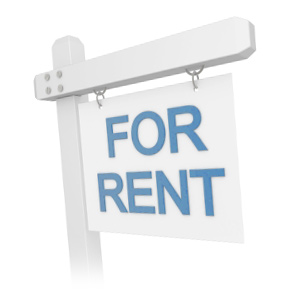 Buying a Home or Renting
Buying a Home or RentingAlthough, like any financial investment there are some risks and challenges associated with buying a home but the positive aspects of homeownership easily outweighs the risk. The exception to the rule is the unfortunate homeowners who purchased their properties during the height of the market and the artificial real estate boom of the past decade. Today’s market, however, offers a safe environment comprised of lower priced homes and all-time low interest rate. While renting was considered as playing safe in the past few years, it is an absolute waste of your money in today’s real estate market.
From the financial point of view, homeownership has been one of the most solid investments for the American families during the past decades. Think of paying your monthly mortgage payments like a mandatory saving plan. The more money you contribute to your mortgage amount the more savings you will accumulate. It is important to mention that although at the beginning the larger portion of your monthly mortgage payments will go towards the interest and a very small portion towards the equity but this ratio will change over time, becoming of the same value halfway through the loan. From the day you enter the second half of your mortgage, the ratio of interest rate/equity becomes more in your favor by allocating more of the monthly payments towards the equity and less towards the interest.
Another point to consider is the rising costs of the rental properties. Although the home ownership might prove to be more expensive than renting but over time, the tide will turn in homeowners favor. This is primarily due to the ever rising cost of rental while the monthly payment of any average 30-year-old mortgage will remain the same throughout the life of the loan. This means while the rental amount will adjust to the inflation rate in the coming years, paying the mortgage, on the other hand, is like an insurance that protects you against such inflation.
You receive all these benefits while enjoying the wonderful feeling of the home ownership and living in an environment that is designed by you. In comparison, many homeowners will eventually have the chance to make some improvements to their home in order to create a living area that matches their taste and personalities as well as the wants and needs of the families. But when it comes to renting any attempt to make such improvements to any rental property is either not permitted by the landlord or it becomes a waste of the tenant’s money when they move.
Most rental apartment buildings are designed to maximize the number of the rental units and there is a little chance to offer a storage space. Most landlords will not allow the slightest alteration to the rental units and some would not even allow any changes to the interior painting. In some instances. tenants are forced to live in an unsafe environment due to the landlord’s refusal to fix such problems.
Although there are many advantages in purchasing of a home but no one should take this venture lightly and become involved in a transaction that might result in the loss of their lifetime saving as well as their credit. Home buyers should always seek advice from real estate professionals who are licensed and act as an expert during the entire transaction, from finding a home, negotiating the price, all the way to the final closing day.
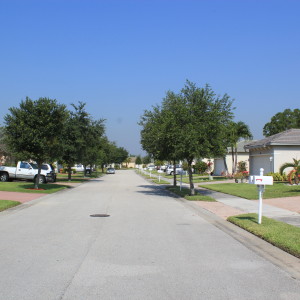 Buying First Home
Buying First Home
The old cycle of first-time home buyers purchasing a small house or condominium as the first home, birth of children and outgrowing the first residence and looking for a larger home is greater in today’s lifestyle than ever. While the cycle continues with buying bigger homes as the family grows and ends with downsizing perhaps to a condo again. The role of a real estate professional remains the same throughout the entire cycle. The last phase of this cycle perhaps could be the first stage of the cycle and back to the condo lifestyle especially when parents become empty nesters.
The criteria for buying a new home in each phase of this cycle are as diverse as the people engaged in the cycle. Buying a house with small children is a perfect example of how such criteria could be defined totally different from others, for example from the homebuyers looking to downsize.
Their journey begins with the birth of the first child and the need for an extra bedroom as well as the play area for the child, which normally means graduating from condo life to living in a single family home. The need grows as the number of the children increases. To start the process, the parents need to save enough money for a down payment and closing costs that are associated with purchasing of a house. Meanwhile, a list of wants and needs grows longer to cover all future needs of children. The location and type of neighborhoods normally top this list, followed by the safety, the quality of the schools, the proximity to the parks and playgrounds and other amenities that are geared to accommodating children.
After establishing the criteria for the purchase of a house that matches most of their needs it’s time for house hunting. Our experience has shown that many of these first-time home buyers have little to no strategy about locating their ideal home. While many comb through local newspapers the others drive around looking for for-sale signs to call. These methods of locating a home most often results in wasting valuable time or engaging in bad deals that are a direct result of lack of representation by a professional real estate agent, or the safe and most cost effective method.
All Realtors working in the State of Florida are licensed professionals that are sworn to follow the Realtors Rules of Ethics. The Florida Real Estate Commission, also known as FREC, is the governing body that oversees the conducts of the Realtors and Real Estate Companies. They are also responsible for compensation granted to consumers who have faced financial damages due to the misconduct of Realtors or real estate companies. Considering all that, some home buyers still ignore services of a Realtor even though in most cases there are no costs to homebuyers for such services. In Florida, the sellers pay all commissions for the sale of their properties and, since the majority of the Realtors are considered to be Transaction Brokers, there is no commission or any other costs to home buyers for real estate services by Realtors.
Employing the services of the real estate professionals could help families in both processes of selling their existing residence and purchasing of the new home. Since in most cases the homeowners need the proceeds from the sale of their home for purchasing of their new home, the processing of both contracts at the same time proves to be a tedious task that requires the expertise of a Realtor. To accomplish a timely and smooth transaction the use of the same Realtor to handle both transactions is very crucial especially when it comes to close on both properties simultaneously.
The process of a double transaction begins with the listing of the existing home, followed by looking for a new home. Parents should take the time to explain the process to children while emphasizing the importance of having their rooms picked up and looking neat at all time. During this period, most often than none, the children face the anxiety of losing their classmates and friends and offer resistance to any change to their environments. It is the parent’s duty to understand their feelings and have a plan to work the problems out with their children without becoming combative and hostile. They could accomplish this with a little planning during the next phase of their journey in purchasing a new home, which is the house-hunting phase.
While the potential buyers are in and out of the current residence the process of locating that ideal home has also begun. It is an exciting and at times disappointing days when parents face challenges such as lack of showing, low-ball offers and other obstacles in the sale of their home, considering that all this is happening while they are also trying to find and negotiate on the new home. During this period, it is of most importance to get the children involved in the process of finding a new home. This will allow them to appreciate the advantages that the new house offers and reduces their resistance to such changes. A bigger bedroom, more bathrooms, large backyard or a swimming pool are enough reasons to entice the children to join their parents in making the dream of home ownership come true.
 Buying Real Estate
Buying Real EstateWhile for our parents buying real estate meant a once-in-a-lifetime venture, the average family in today’s market moves every 7-8 years. Purchasing of real estate also means to commit the largest investment for any average family, regardless of how many years they plan to stay in the new home. For an investment of this size, there is no room for guess-work or errors and one must always seek assistance from real estate professionals. A local real estate agent is your best bet in locating, negotiating ad closing on a new home.
When buying a home in Port St Lucie you must first call a reputable local real estate company to put you in contact with one of their professional Realtors. The locality of your Realtor, who is an expert in real estate in Port St Lucie, will prove to be of a great value in many different ways. The local ordinances, city water hook-up charges and the loans associated with hook ups could become a surprise cost in the future that you have not planned for. Also, planned future expansion of some roads could have an adverse effect in the value of your home in years to come. Many of the above-mentioned points could be exclusive only to the city of Port St Lucie and an out of the area Realtor most probably will not have any idea about these considerations.
The planned extension of Crosstown Parkway and the enactment of Eminent Domain by the city of port St Lucie have affected many homes in the path of this road. The proposed road is planned and the budget is approved to connect the Port St Lucie, especially the St Lucie West and the fast growing Town of Tradition, to US1. Construction of a bridge over the St Lucie River is part of the overall plan to bring the west side of the Port St Lucie closer to the east-side and beach areas. While most out-of-area Realtors might not have any knowledge of the upcoming construction plans for Crosstown Parkway, a local Port St Lucie Realtor on the other hand could warn you of the possible negative impacts that this expansion could have on your future home.
The other matter that could be different from other municipalities is the connection fees that the city has in place for connecting the sewer system of many homes to the city sewer services. While there are still some homes that depend on their septic tank system only, most other homes have been connected to the city sewer. Based on the agreement between the City and the citizens of Port St Lucie the connection fee could be paid in full or through a loan installment. When it comes the time to place an offer to purchase a home in Port St Lucie, your local Realtor should be able to advise you of the existence of such a loan. The common practice in the area is for the seller to pay the installments until the closing day and for the buyer to pay thereafter. But this, like any other point in a real estate purchase contract, could be negotiable during the offer procedure.
There are few steps that you should take before buying home in Port St Lucie or any other neighborhoods in the Sunshine State. These steps are designed to help buyers to be prepared in advance to face any obstacle on their way and to make the purchasing of a home a pleasant ad exciting venture. To begin with the buyers should have their financials and the necessary documentation in a row. This means to calculate the amount of monthly mortgage they could afford along with the necessary funds for down payment and closing costs. The rule of thumb for estimating the monthly mortgage used to be one week salary but in recent years most financial advisors like to see this number to be equal to 1/3 of the total monthly salary.
After coming up with a monthly cost of the mortgage, contact a lending institution and see if, based on your credit, you could qualify for such monthly payment. Your mortgage advisor could easily calculate the maximum price of a house for the amount of monthly mortgage payment that you’re pre-qualified for. This calculation is primarily based on the amount of down payment, the credit worthiness of the borrower as well as the interest rate at the time of the loan. Most often the local banks that you conduct your day-to-day banking are the best source for applying for a loan to purchase a home. At this time after you have an idea of the price range of a home that you would qualify for. The next step is to ask your mortgage advisor for a “Pre-Qualification Letter”. A typical PQ Letter would state that, based on your income/debt and credit score, you have been pre-qualified for obtaining a loan for that amount.
With a pre-qualification letter on hand, it is time to enter the house-hunting phase of the journey in buying a home and contacting a real estate agent. For this, ask friends and neighbors to refer an agent they have worked in the past. If you don’t know anyone in the new neighborhood, you could simply call one of the reputable real estate companies and they will be happy to assign one of their licensed Realtors to assist you in locating your ideal home. When contacting a realtor you should have a list of your wants and needs along with the pre-qualification letter on hand. This list could include the number of bedrooms/baths, garage, pool, school district or the area near expressway or your work. If you are not familiar with the area ask your Realtor to show the area that could match your criteria in the map of the city of Port St Lucie and also show you sample of the available homes in the MLS on the map along with their price range.
Upon locating number of listings that match your wish-list, your real estate agent will set up all necessary appointments and accompany you on a tour to preview the homes. Your Realtor is your ally and the best source that you have in finding the right home, negotiating the right price and following up with all steps in the contract, such as the appraisal and inspection. If all pieces come together you will reach the best part of your journey, which is the closing day and obtaining the keys to your dream home. Again, your Realtor should be able to go through the closing documents line by line and explaining each line-item to you. At any time if you are not clear about a charge or credit ask questions and do not sign any documents until you have clear answers to your questions. Remember, the only bad questions are the ones that you don’t ask. If you are not satisfy with your Realtors explanation of the items in question ask the title company representative who is conducting the closing and they should be able to clarify any area of the closing statement, or HUD-1 as it is known in the industry.
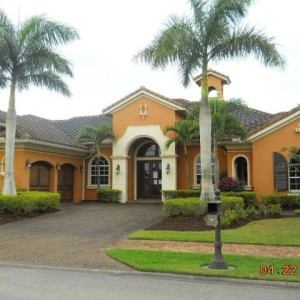 Buying Foreclosure Properties
Buying Foreclosure PropertiesThe economic meltdown of the last decade has changed the landscape of the real estate and real estate investment foreclosure properties. The appearance of new terminologies such as Bank Owned and REO in our daily vocabulary has also meant the introduction of a new real estate market with rules different from the traditional real estate that we were accustomed to in the past. Although the opportunity to buy a REO property for below the fair market value is a tempting proposition however, in reality, it might not be as simple as it sounds. Many of these properties have been neglected for a long period of time and are in a dire need of repairs. While some repairs could be cosmetic and visible to naked eyes the other hidden repairs might prove more costly that one has estimated. Some foreclosure properties could have been affected by other liens and deficiencies, such as non-payment of utilities or local taxes.
The Difference Between Foreclosure and REO or Real Estate Owned
Buying Foreclosure Properties in Florida
It is imperative that all buyers conduct thorough due diligence prior to taking a step toward buying foreclosure properties in Florida. To start let’s examine the meaning and the process of the foreclosure along with the requirements that buyers have to comply with when acquiring such properties.
Foreclosure Process: After courts grant judgment to financial institutions, primarily for non-payment of the mortgage by the homeowners, the banks start the foreclosure process. The purpose of the foreclosure process is for the banks to recuperate the unpaid balance of the loan, accrued interest, attorney fees and other costs associated with a foreclosure process. The next step for these financial institutions, or the trustees, is to try to sell the foreclosed properties through a foreclosure auction process.
Requirements to Buy a Foreclosure Property: To buy a foreclosure property the buyer needs to have a cashier’s check for not less than the full amount of the minimum bid, all previously mentioned costs. Another important point to consider when purchasing any foreclosure property is for buyers to acknowledge that they will receive the property “AS IS”. In the case of foreclosure properties the term “AS IS” has a very broad implication, which could include buyers’ responsibilities to see that the property is vacated by previous owners, tenants or any other occupants. Buyers also assume responsibility for all liens, unpaid taxes and zoning violations that might have encumbered the title to the property.
Buying REO or Real Estate Owned Properties in Florida
Many foreclosed properties do not receive enough bids sufficient to cover the minimum bid that is set prior to the auction. At this time, all unsuccessful foreclosure properties become the property of the bank and referred to as Real Estate Owned or REO. This means that REO properties are actually the by-products of failed foreclosures and a result of the unsuccessful foreclosure process. The risks that were associated with foreclosure properties are reduced drastically when they become Real Estate Owned or REO Properties. When purchasing REO properties the buyers will receive the properties as vacant and don’t have to worry about evicting the tenants or previous homeowners. Also, all past due taxes along with other encumbrances such as liens and zoning violations will be cleared by the financial institutions that are in possession of the REO properties. This means that unlike the foreclosure properties the buyers of REO properties would receive a title or deed that is free and clear of any and all encumbrances.
The REO properties are normally listed somewhat below the fair market value and do not carry the risks that are associated with most foreclosure properties. While the bank-owned, REO homes are good choices for first-time home buyers, investors and anyone in need of dependable housing, but like any other investment, the homebuyers might do their homework and always employ the assistance of a real estate professional.
REO, Real Estate Owned Properties in Port St Lucie
Buying REO, Real Estate Owned, or as commonly known the Bank Owned Properties in Port St Lucie offers all advantages that we discussed earlier plus a better price point that results in getting more properties for your the money. The 2014 year-end analysis of the real estate market in St Lucie County is clearly the indication of the fact that the better deals are still in this country. The following data is compiled from the annual report by Florida Realtor Association, FAR:
While the Median Price for St Lucie County for 2014 established at $145.000, the Median Price of $218,000 was recorded for the neighboring Palm Beach County during the same calendar year. Also at the same period, the St Lucie County homeowners enjoyed a higher rate of appreciation on their real estate, by 16.3%, against the 11.8% increase in property values in the Palm Beach County. From major cities in St Lucie County, the City of Port St Lucie showed a 16% appreciation, with Median Price of $145,000 while Jensen Beach showed their Median Prices dropping from $250,000 to $179,000 or a 12.7% decline and Stuart had an increase of 14.7% bringing their Median Prices to $188,000.
Although the opportunity to buy a REO property for below the fair market value is a tempting proposition, in reality, it might not be as simple as it sounds. Many of these properties have been neglected for a long period of time and are in a dire need of repairs. While some repairs could be cosmetic and visible to naked eyes the other hidden repairs might prove more costly that one has estimated. Some foreclosure properties could have been affected by other liens and deficiencies, such as non-payment of utilities or local taxes.
Studying this report proves that while some markets are heading toward becoming out of reach for many middle-class families, Port St Lucie, and St Lucie County homes are still within the reach and are the clear choice for homebuyers and investors alike.
 Foreclosure Rate for 2015
Foreclosure Rate for 2015The real estate market in this decade has been influenced by distressed properties more than any other factor. The REO, Bank Owned, and Short Sale have become household terms. Every year we wonder if there is any end for foreclosure properties and what is the forecast for the upcoming months and years. With new foreclosure numbers surfacing, the light at the end of the foreclosure tunnel seems to be from a train wreck uprooting families lives. This is unfortunate that most hiccups in any financial sector seem to have negative effects on the housing industry. Today’s culprits affecting our housing market are the economic squeeze in China and the consequent effects on Wall Street and the stock market.
The numbers give a glimpse to the foreclosure future in the country. The Distressed Saturation, total REO + Short Sale, divided by all Residential Real Estate Sales, has jumped from 15.4 to 16.1 for the quarter. The South suffered the most increase in Distressed Saturation by 1.5%, Midwest and West by 0.9% and the Northeast are the only territory with a drop of .3%.
The future of real estate remains uncertain due to many factors that stem from consumers’ confidence and also how the investors will treat the upcoming distressed assets in the real estate and foreclosure market. While the pessimists reminding us of the doomsday of the last decade, I personally believe with the stock market uncertainty, the real estate investments will become a more in demand investment. The most notable factor is the negative effects of adding more distressed properties to the current market, which eventually will fall on home builders and developers’ shoulders. The consumers and investors will welcome the abundance of REO properties while the construction companies’ fear of competing with lower priced resale homes would prevent the jump in construction of such homes.
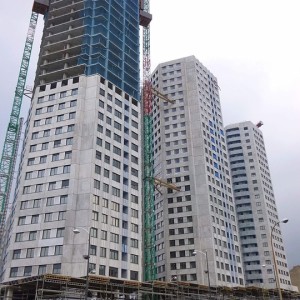 Preconstruction Sales programs Save & Exit
Preconstruction Sales programs Save & Exit One of the main reasons for owner occupants to shy away from buying preconstruction properties is the time of the delivery of their new home. For a typical homeowner, it becomes very difficult to wait for few years to take possession of their property or qualify for two mortgages. The other group of the pre-construction investors are renters who are looking to see their home ownership dream come true in the near future. Since this group is used to living in temporary residences they could easily accept the waiting time required for delivery of their pre-construction homes. Another point that makes renters good pre-construction buying candidates is the fact that since they do not have to qualify for a mortgage at the time of the contract, this gives them time to clean up their credit history in order to qualify for mortgage and favorable interest rates.
During our extensive work with new-home developers, we have always advised them to create a campaign aimed to reach the renters. We have also implemented many such campaigns targeting the renters based on their income and the proximity of their residences to the projects and many other factors to narrow down to the best possible prospects. In some cases, a special program that is tailored to the specific needs of these prospects has also proven successful. Such programs could include an easier down payment program, perhaps through an installment plan and other financial strategies designed to pave the road for obtaining a mortgage. The primary purpose of such programs is to demonstrate that to own a home is much easier and at time cost less than renting for this group of people. We have experienced that most renters could easily afford the monthly mortgage payments, but the qualification for a mortgage, down payment and closing costs, are the main hurdles that are stopping them from reaching their dreams. By purchasing a pre construction property under special Renters’ Homeownership Programs, they could pay the down payments in installments and also have an ample time to save for closing costs as well as the qualifying for a mortgage.
We invite developers to contact us for consultation on design and implement a Renters’ Incentive Program as well as many other proven solutions for the sales of the preconstruction homes to qualified buyers at the shortest time possible.